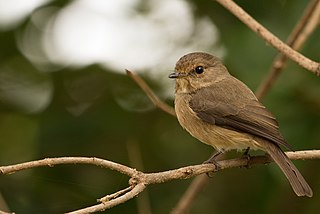 W
WThe African dusky flycatcher, dusky-brown flycatcher or dusky alseonax, is a small passerine bird of the Old World flycatcher family, Muscicapidae. It is a resident breeder in Africa from Nigeria, the Central African Republic, South Sudan and Ethiopia south to South Africa. It is very common in its woodland habitat, which includes riverine forests, evergreen forest edges and clearings, especially near water bodies such as lakes, dams and streams, and well-wooded suburban gardens.
 W
WThe austral pygmy owl or Chuncho is a species of owl in the family Strigidae. It is found in Argentina and Chile.
 W
WThe austral rail is a species of bird in the family Rallidae. It is found in Argentina and Chile. Its natural habitats are swamps, freshwater lakes, and freshwater marshes. It is threatened by habitat loss caused by the development of intensive agriculture.
 W
WThe Australian shelduck, also known as the chestnut-breasted shelduck or mountain duck, is a shelduck part of the bird family Anatidae. The genus name Tadorna comes from Celtic roots and means "pied waterfowl". They are protected under the National Parks and Wildlife Act 1974.
 W
WThe black cicadabird, also known as the New Guinea cuckooshrike or New Guinea cicadabird, is a species of bird in the family Campephagidae. It is found in the Aru Islands and New Guinea. Its natural habitats are subtropical or tropical moist lowland forest and subtropical or tropical mangrove forest.
 W
WThe black harrier is a medium-sized African harrier whose range extends from South Africa to Botswana and Namibia. It has a wingspan of 105–115 cm (41–45 in) and a body length of 44–50 cm (17–20 in). When perched, this bird appears all black. However, in flight a white rump and flight feathers become visible. Its morphology is comparable to that of other harriers, with a slim body, narrow wings and a long tail. Male and female plumages are similar. Juveniles have buff under-parts and heavily spotted breasts.
 W
WThe black-browed albatross, also known as the black-browed mollymawk, is a large seabird of the albatross family Diomedeidae; it is the most widespread and common member of its family.
 W
WThe bronze-winged duck also known as the spectacled duck, is a dabbling duck and the sole member of its genus Speculanas. It is often placed in Anas with most other dabbling ducks, but its closest relative is either the crested duck or the Brazilian duck, which likewise form monotypic genera. Together they belong to a South American lineage which diverged early from the other dabbling ducks and may include the steamer ducks.
 W
WThe brown babbler is a species of bird in the family Leiothrichidae. It is predominantly found in West Africa, but ranging from the Gambia to Kenya. The species is common across its range. The species is also known as the Sudan babbler.
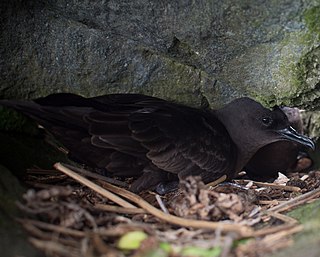 W
WBulwer's petrel is a small petrel in the family Procellariidae, and found in the genus Bulweria. This bird is named after the English naturalist James Bulwer.
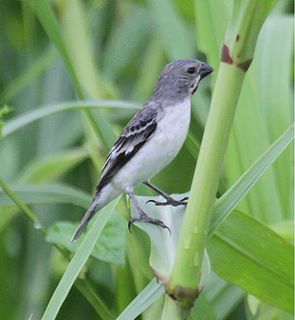 W
WThe chestnut-throated seedeater is Neotropical songbird in the family Thraupidae.
 W
WClapperton's spurfowl is a species of bird in the family Phasianidae. It is found in Cameroon, Central African Republic, Chad, Eritrea, Ethiopia, Mali, Mauritania, Niger, Nigeria, Sudan, and Uganda.
 W
WThe comb-crested jacana, also known as the lotusbird or lilytrotter, is the only species of jacana in the genus Irediparra. Like other jacana species, it is adapted to the floating vegetation of tropical freshwater wetlands.
 W
WCooper's hawk is a medium-sized hawk native to the North American continent and found from southern Canada to Mexico. This species is a member of the genus Accipiter, sometimes referred to as true hawks, which are famously agile, relatively small hawks common to wooded habitats around the world and also the most diverse of all diurnal raptor genera. As in many birds of prey, the male is smaller than the female. The birds found east of the Mississippi River tend to be larger on average than the birds found to the west. It is easily confused with the smaller but similar Sharp-shinned hawk.
 W
WThe crested black tyrant is a species of bird in the family Tyrannidae. It is found in Brazil, Uruguay and northeastern Paraguay. Its natural habitats are dry savanna and pastureland.
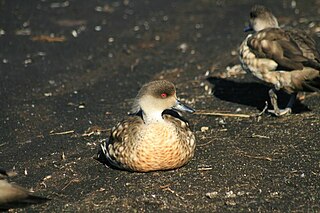 W
WThe crested duck or South American crested duck is a species of duck native to South America, the belonging to the monotypic genus Lophonetta. It is sometimes included in Anas, but it belongs to a South American clade that diverged early in dabbling duck evolution. There are two subspecies: L. specularioides alticola and L. specularioides specularioides. The Patagonian crested duck is also called the southern crested duck and its range lies in the Falklands, Chile, and Argentina.
 W
WThe cricket warbler, also known as cricket longtail, scaly longtail or cricket prinia, is a species of bird in the family Cisticolidae. It belongs to the genus Spiloptila; it is often the only species included in the genus but sometimes the red-fronted prinia is placed there as well.
 W
WDeignan's prinia is a species of bird in the family Cisticolidae. The Burmese prinia and the Annam prinia were formerly lumped with this species as the brown prinia.
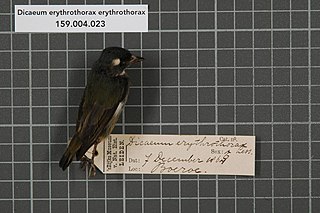 W
WThe flame-breasted flowerpecker is a species of bird in the family Dicaeidae. It is endemic to the Maluku Islands in Indonesia. Its natural habitats are subtropical or tropical moist lowland forest and subtropical or tropical moist montane forest. It is restricted to Buru.
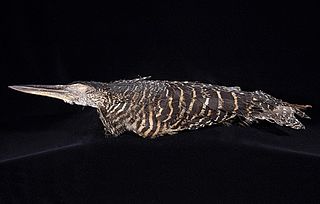 W
WThe forest bittern is a bird indigenous to New Guinea. It is the only member of the genus Zonerodius and is also known as the New Guinea tiger heron.
 W
WThe greater blue-eared starling or greater blue-eared glossy-starling is a bird that breeds from Senegal east to Ethiopia and south through eastern Africa to northeastern South Africa and Angola. It is a very common species of open woodland bird, and undertakes some seasonal migration.
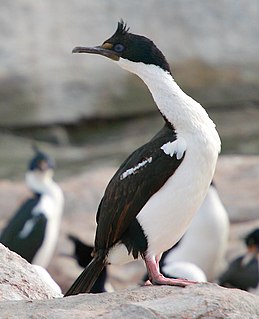 W
WThe imperial shag or imperial cormorant is a black and white cormorant native to southern South America, primarily in rocky coastal regions, but locally also at large inland lakes. Some taxonomic authorities, including the International Ornithologists' Union, place it in the genus Leucocarbo, others in the genus Phalacrocorax. It is also known as the blue-eyed shag, blue-eyed cormorant and by many other names, and is one of a larger group of cormorants called blue-eyed shags. The taxonomy is very complex, and several former subspecies are often considered separate species.
 W
WThe ivory-billed coucal or greater black coucal is a species of cuckoo in the family Cuculidae. It is found in the Aru Islands and New Guinea. Its natural habitat is subtropical or tropical moist lowland forest.
 W
WThe lesser horned owl or Magellanic horned owl is a large owl of the genus Bubo found in southern South America, extending north to the central Andes. It has traditionally been classified as a subspecies of the great horned owl, but is now treated as a separate species based on differences in voice and size and because of the genetic distance between the two.
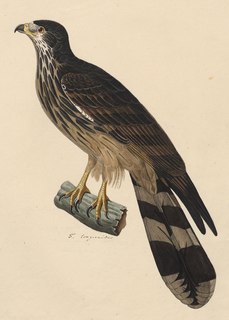 W
WThe long-tailed honey buzzard is a bird of prey in the family Accipitridae.
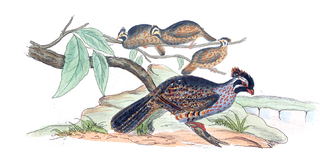 W
WThe long-tailed wood partridge is a bird species in the family Odontophoridae. It is found only in Mexico. Its natural habitat is subtropical or tropical moist montane forest.
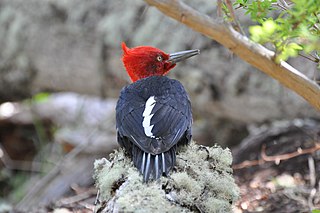 W
WThe Magellanic woodpecker is a very large woodpecker found in southern Chile and southwestern Argentina; it is resident within its range. This species is the southernmost example of the genus Campephilus, which includes the famous ivory-billed woodpecker.
 W
WThe North Island saddleback is a forest-dwelling passerine bird, endemic to the North Island of New Zealand. It is also known in Māori as the tīeke. It was formerly considered conspecific with the South Island saddleback. The IUCN lists the species as Near Threatened, while it is listed as a "recovering" species in the New Zealand Threat Classification System.
 W
WThe painted francolin or painted partridge is a species of francolin found in grassy areas in central and southern India and in the lowlands of southeastern Sri Lanka. They are easily detected by their loud calls especially during the breeding season. Thomas C. Jerdon noted that the species was found mainly in Central India south of the Narmada and to the east of the Western Ghats as well as the Chota Nagpur and Northern Circars. It can be confused only with the black francolin with which it partly overlaps and is said to sometimes hybridize. This species can be told apart from the female of a black francolin by the lack of a rufous hind collar and the white spots on the underside. The face is rufous and there is no dark stripe running behind the eye.
 W
WThe Patagonian crested duck, also known as the southern crested duck, or the grey duck in the Falkland Islands, is the nominate of two subspecies of the crested duck.
 W
WThe Peruvian diving petrel, is a small seabird that feeds in offshore waters in the Humboldt Current off Peru and Chile. Like the rest of the diving petrels it is a nondescript bird, with a dark back and pale belly, and blue feet, and can be separated from the rest of its family only by differences in its beak and nostrils. Unlike the common diving petrel and the South Georgia diving petrel it feeds in cold, offshore, often pelagic water, obtaining small fish larvae and planktonic crustaceans by pursuit diving. The main part of his food is made up by plankton organisms (85.3-91.1%). The remaining percentage of the Peruvian diving petrels food is fish, mainly anchovies. Peruvian diving petrels can dive up to 83 metres (270 ft) deep but the average depth was recorded at around 30 metres (100 ft). It was long thought that the Peruvian diving petrel was rather bad in flying. However, great numbers of birds have been observed fishing regularly in the area between Asia Island and Pachacamac Island at a distance of 150-200 kilometres north of their Peruvian breeding grounds.
 W
WThe radjah shelduck, is a species of shelduck found mostly in New Guinea and Australia, and also on some of the Moluccas. It is known alternatively as the raja shelduck, black-backed shelduck, or in Australia as the Burdekin duck.
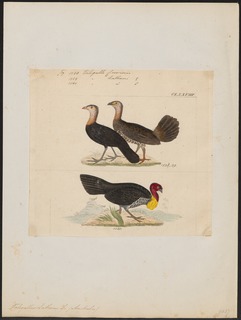 W
WThe red-billed brushturkey also known as red-billed talegalla or Cuvier's brushturkey, is a large, up to 57 cm long, black megapode with bare yellow facial skin, a reddish orange bill, yellow iris, and orange feet. The head is covered with bristle-like black feathers. The sexes are similar.
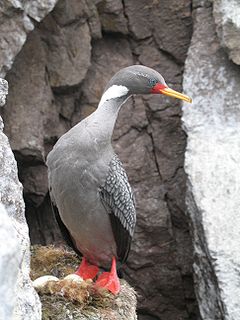 W
WThe red-legged cormorant also known as the red-legged shag, red-footed cormorant, red-footed shag, Gaimard's cormorant and grey cormorant, is a resident of the coastline of South America. It is non-colonial unlike most seabirds. The red-legged cormorant has not been observed wing-spreading, which is unusual among cormorant species.
 W
WThe rosy-patched bushshrike is a species of bird in the family Malaconotidae. It is monotypic within the genus Rhodophoneus. It is found in Djibouti, Egypt, Eritrea, Ethiopia, Kenya, Somalia, Sudan, and Tanzania. Its natural habitat is subtropical or tropical dry shrubland.
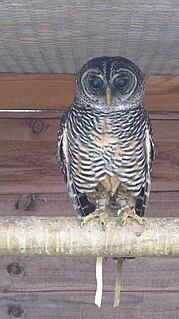 W
WThe rufous-legged owl is a medium-sized owl with no ear tufts. Its upper parts are rufous brown barred with white with more white on the head and nape. It has a rufous facial disk and dark eyes, and its legs and feet are orange-brown to cinnamon. It reaches sizes of about 33–38 cm long and weighs about 300-400 grams. Its range stretches from central Chile and west Argentina to Tierra del Fuego and is occasionally spotted on the Falkland Islands. It lives in dense, moist montane forest and semi-open lowland forest where it can catch small mammals, birds, and insects. It breeds in October and lays 2-3 eggs in a tree hollow. Its call is a rapid grunting followed by high pitched nasal noises. Though it is not threatened it does suffer habitat loss because of logging in a large part of its range.
 W
WThe scaly-breasted bulbul is a species of songbird in the bulbul family. It is found from the Malay Peninsula to Borneo. Its natural habitat is subtropical or tropical moist lowland forests. It is threatened by habitat loss.
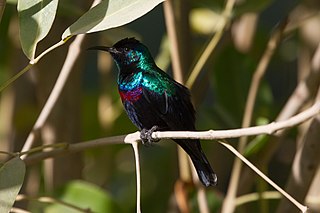 W
WThe shining sunbird is a species of bird in the family Nectariniidae.
 W
WThe sickle-winged guan is a species of bird in the family Cracidae.
 W
WThe spot-winged monarch, or spot-wing monarch flycatcher, is a species of bird in the family Monarchidae. It is found in Indonesia and Papua New Guinea. Its natural habitat is subtropical or tropical moist lowland forests.
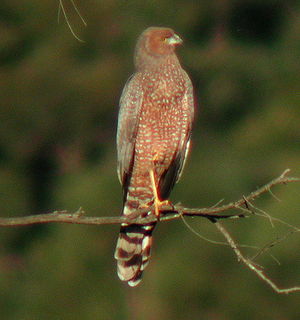 W
WThe spotted harrier also known as the smoke hawk, is a large Australasian bird of prey belonging to the family Accipitridae.
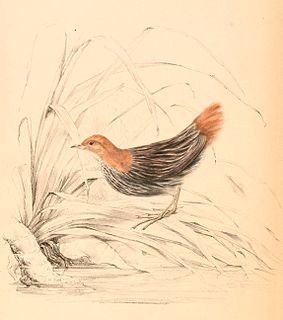 W
WThe striped flufftail is a species of bird in the flufftail family Sarothruridae. It is also known as the red-tailed flufftail. The species is closely related to the Madagascar flufftail. The species has a disjunct distribution across the Afromontane of southeastern Africa, with two subspecies. The nominate subspecies S. a. affinis is found in eastern South Africa and Swaziland. S. a. antonii, named for German ornithologist Anton Reichenow, is found in eastern Zimbabwe and Mozambique, Malawi, southern Tanzania, Kenya and the south of South Sudan.
 W
WThe tawny eagle is a large, long-lived bird of prey. Like all eagles, it belongs to the family Accipitridae. Its heavily feathered legs illustrate it to be a member of the subfamily Aquilinae, also known as “booted eagles”. Tawny eagles have an extensive but discontinuous breeding range that constitutes much of the African continent as well as the Indian subcontinent, with rare residency occurring in the southern Middle East. Throughout its range, it favours open dry habitats such as semideserts, deserts steppes, or savanna plains. Despite its preference for areas of aridity, the species seldom occurs in areas where trees are entirely absent. It is a resident breeder which lays one to three eggs in a stick nest mostly commonly in the crown of a tree. The tawny eagle is perhaps the most highly opportunistic of all of its taxonomic clan, and often scavenges on carrion or engages in kleptoparasitism towards other carnivorous animals but is also a bold and active predator, often of relatively large and diverse prey. It is estimated that tawny eagles can reach the age of 16 years old. Nonetheless, precipitous declines have been detected throughout the tawny eagle's range. Numerous factors, particularly loss of nesting habitat due to logging and global warming, as well as persecution and other anthropogenic mortality are driving the once numerous tawny eagle perhaps to the brink of extinction.
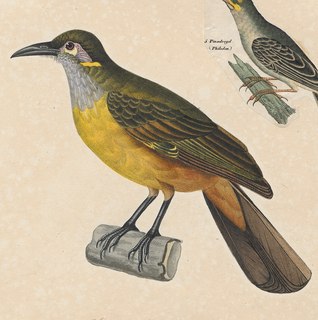 W
WThe tawny-breasted honeyeater is a species of bird in the family Meliphagidae. It is found in Australia, Indonesia, and Papua New Guinea. Its natural habitats are subtropical or tropical moist lowland forests, subtropical or tropical mangrove forests, and subtropical or tropical moist montane forests.
 W
WThe tiger shrike or thick-billed shrike is a small passerine bird which belongs to the genus Lanius in the shrike family, Laniidae. It is found in wooded habitats across eastern Asia. It is a shy, often solitary bird which is less conspicuous than most other shrikes. Like other shrikes it is predatory, feeding on small animals. Its nest is built in a tree and three to six eggs are laid.
 W
WThe wattled guan is a species of bird in the family Cracidae. It is a fairly large black cracid with blue-based, black-tipped beak and a long, red-and-yellow wattle.
 W
WThe white-breasted cuckooshrike is a species of bird in the family Campephagidae. It is found in Angola, Benin, Botswana, Burkina Faso, Burundi, Cameroon, Central African Republic, Democratic Republic of the Congo, Ivory Coast, Ethiopia, Gambia, Ghana, Guinea, Guinea-Bissau, Kenya, Malawi, Mali, Mauritania, Mozambique, Namibia, Nigeria, Rwanda, Senegal, Sierra Leone, South Africa, Sudan, Swaziland, Tanzania, Togo, Uganda, Zambia, and Zimbabwe. Its natural habitats are subtropical or tropical dry forest and dry savanna.
 W
WThe white-fronted chat is a species of bird in the honeyeater family Meliphagidae native to southern Australia. The male has a white face bordered by a black breast band. It is insectivorous.
 W
WThe willow flycatcher is a small insect-eating, neotropical migrant bird of the tyrant flycatcher family. There are four subspecies of the willow flycatcher currently recognized, all of which breed in North America. Empidonax flycatchers are almost impossible to tell apart in the field so biologists use their songs to distinguish between them. The binomial commemorates the Scottish zoologist Thomas Stewart Traill.